#world cassowary day
Explore tagged Tumblr posts
Text
Apparently it's World Cassowary Day
560 notes
·
View notes
Text
For #WorldCassowaryDay :

Jean-Baptiste Oudry (France, 1686–1755)
Cassowary, 1745
oil on canvas, H 63.7 in (161.9 cm) x W 50.1 in (127.4 cm)
Staatliches Museum Schwerin
🆔 Southern Cassowary (Casuarius casuarius), aka the Double-Wattled Cassowary
#animals in art#animal holiday#birds in art#bird#painting#oil painting#cassowary#Southern Cassowary#European art#French art#natural history art#wildlife art#18th century art#Jean-Baptiste Oudry#Staatliches Museum Schwerin#World Cassowary Day#Australian animals
35 notes
·
View notes
Text


#world cassowary day#cassowary#cassowaries#birds#animals#birding#bird#zoology#conservation#heart locket#burning text#notas
24 notes
·
View notes
Text

ITS WORLD CASSOWARY DAY THATS MY FUCKING GOAT MY FAVORITE BIRD LETS FUCKING GO!!!!!!
3 notes
·
View notes
Text
Happy holidays! Today is World Cassowary Day.
World Cassowary Day 2024: Protecting the Most Dangerous Bird from Extinction
3 notes
·
View notes
Text

Quick art for World Cassowary Day
6 notes
·
View notes
Note
Hello! I have a request For Dandy’s world if you wanna do it.
It was a simple idea of a Shelly x Gender neutral Reader! Reader loves the stars and outer space in general!
Also, Shelly and Reader definitely have a crush on one another, But are so oblivious to one another’s feelings that the other Toons physically cringe at them whenever they are together!
(I��m sorry if this doesn’t make sense, or if I’m not being clear. I’m bad at this type of stuff…)
Thanks for the request! Hope you like it! Shelly go Rawrr!
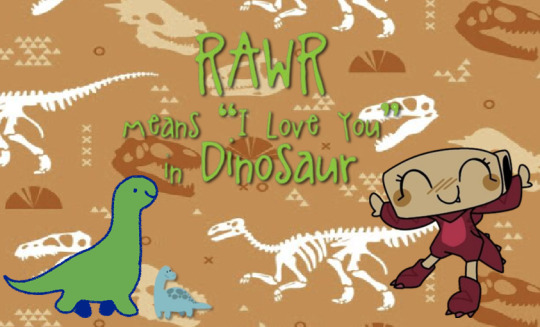

Ever since you could remember, you had always been fascinated by the stars and space in general. You didn't know exactly what drew you to these things, but it was definitely fun to lie on the floor of Astro's big room and just watch everything with your best friend.
Oh yes! Another thing that you really couldn't explain why attracted you so much! Your best friend Shelly! She was just so fascinating in your eyes! Besides being very kind and sweet too!
Shelly, just like you, had a specific interest in something, that being dinosaurs!
She had everything related to dinosaurs in her small reach, like posters, statues and even a large museum focused on dinosaurs just for her! You honestly had to admit that you were a little jealous of her because of that.
When you had free time together, you always liked to talk about your interests, and for you the fun was always how Shelly could relate anything to dinosaurs, making you laugh a lot, and she would proudly make an expression and give you a big smile. She was simply the best friend anyone could have in your opinion.
🦖ℝ𝕒𝕨𝕣🦖ℝ𝕒𝕨𝕣🦖ℝ𝕒𝕨𝕣 🦖ℝ𝕒𝕨𝕣🦖ℝ𝕒𝕨𝕣🦖ℝ𝕒𝕨𝕣🦖
You and Shelly were quietly sitting together on one of the benches in the lobby, enjoying the day, since that day Gardenview would be closed, for who knows what, probably some holiday that you didn't remember enough to remember.
The other toons seemed to like the idea of staying in the lobby too, as they were all spread around the place talking or playing some game together.
The two of you, once again ignoring your surroundings, were having another one of your conversations about your greatest interests. And I mean… could you blame them?
"I'm telling you, Shelly! The Orion constellation is one of the most beautiful constellations ever discovered! My favorite part about it is the Three Marys, they are just adorable stars!" You said in a happy tone, swinging your legs as Shelly listened attentively.
"Really fascinating! And did you know that birds, and in particular chickens, ostriches, rheas, cassowaries, emus and kiwis, are the closest living relatives of some of the most famous dinosaurs?" Shelly said in an equally happy tone.
"Wow! Seriously? I didn't know that! You're so smart, Shelly!" You exclaimed, smiling at her and nudging her side gently with your elbow, making her blush and giggle.
"I read a book that said that… I just have a great memory! And you're also very smart too, (Y/n)! Besides being the coolest, sweetest, and kindest friend anyone could ever have!" Shelly exclaimed in an embarrassed tone, holding one of her own cheeks, giving you a smile as you blushed softly at her words.
🦖ℝ𝕒𝕨𝕣🦖ℝ𝕒𝕨𝕣🦖ℝ𝕒𝕨𝕣 🦖ℝ𝕒𝕨𝕣🦖ℝ𝕒𝕨𝕣🦖ℝ𝕒𝕨𝕣🦖
Brightney, Teagan and Tisha, who were not far away and could hear the conversation between the two of you, felt themselves cringe at the words being exchanged, starting to whisper between them.
"Are the two of them still in this 'best friends' thing?" Brightney whispered to the other two girls, who seemed to sigh.
"Unfortunately, yes, dear! I don't understand how the two of them haven't realized their feelings for each other yet. It's just so obvious!" Teagan spoke in a soft, almost worried tone, looking at the two of you out of the corner of her eye before continuing.
"The other day, at one of my tea parties, those two seemed to be "flirting" with each other non-stop! But in the end, I don't think even they knew they were flirting with each other!" Teagan whispered in a somewhat indignant tone, but soon gave a small sigh, shaking her head.
"Well, you have to say that those two are totally adorable together, don't you? Think of it as a flower blooming!" Tisha whispered, giving a small smile as she fixed her own dress.
"I guess… but I hope they realize their feelings for each other sooner… I'm starting to think about becoming a cupid or some kind of matchmaker if that doesn't happen soon." Brightney said with a small nervous smile.
"What you say, friend!" Tisha said with a small smile, soon giving a laugh followed by Teagan.
🦖ℝ𝕒𝕨𝕣🦖ℝ𝕒𝕨𝕣🦖ℝ𝕒𝕨𝕣 🦖ℝ𝕒𝕨𝕣🦖ℝ𝕒𝕨𝕣🦖ℝ𝕒𝕨𝕣🦖
"Space is so big, too! Imagine if they ever discovered the existence of aliens? So cool!" You exclaimed, earning a nod from Shelly.
"That would be cool, I guess! Oooh! Imagine if they could revive a dinosaur? It would be so cool to see one up close!" Shelly said dreamily, making you laugh softly.
"Oooh! Imagine if we could have a star? A pet one— Like Pebble! Aww I wish I had a star so bad!" You said dreamily, then pouted a little, making Shelly give you a soft smile.
"But you have a star! Right here! Look!" Shelly exclaimed, giving you a big smile, which you gave her a confused look.
"Where? I don't see it!" You said in a confused tone, looking around a little, trying to find the star she was talking about.
"Here!" Shelly exclaimed, gently cupping your cheeks in her hands and giving you a quick kiss on the cheek, making you blush.
"I still don't get it…" You spoke in a confused tone, making the shell let out a small giggle, starting to get her own cheeks flushed now.
"You are the star, silly!" Shelly exclaimed, giggling and giving you a small "boop" in the middle of your face, making you gasp a little.
"Awww Shelly… YOU are the sweetest star anyone could ever have!" You spoke in an adoring tone, wrapping your arms around Shelly's form, bringing her closer to you in a hug that she returned as you gently rubbed your cheek against hers.
🦖ℝ𝕒𝕨𝕣🦖ℝ𝕒𝕨𝕣🦖ℝ𝕒𝕨𝕣 🦖ℝ𝕒𝕨𝕣🦖ℝ𝕒𝕨𝕣🦖ℝ𝕒𝕨𝕣🦖
"I also hope they can accomplish it soon…" Tisha whispered to Brightney and Teagan feeling a drop of sweat running down the side of her face.

#dandy's world x reader#dandys world x reader#dw x reader#dandys world shelly x reader#dw shelly x reader
49 notes
·
View notes
Text
let’s talk about the kiwi!!

(an info-dump about one of the weirdest, most scientifically interesting birds we know of today!)
so, we’ve all heard about ratites, right?
well, maybe you don’t know them by name, but you’ve most certainly either heard about them or seen them at some point.
some commonly known members of the ratite group are species like ostriches, emus, and cassowaries— as shown below:

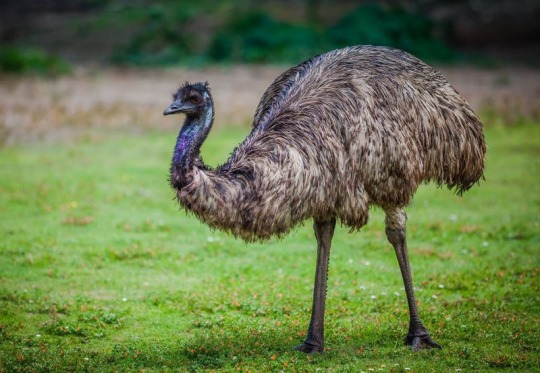

ratites are all flightless birds within the infraclass palaeognathae— the infraclass that none other than the (now extinct) moa and elephant bird belong to!
now, these birds all share very similar characteristics; they’re large, long-necked, and long-legged with big clawed feet. all of these birds are also diurnal— which means they’re primarily active during the day time, just like us!
however, there is one species in this infraclass that is not quite like the others..
the kiwi.
not only are kiwi significantly smaller than their fellow ratites, but they also happen to be nocturnal.
and despite being small, their eggs are incredibly large, taking up to around 20% of the kiwi’s body weight, which has caused a lot of rigorous debate between scientists on exactly why.


one outdated theory suggested that perhaps the kiwi had shrunk over time from previously being very large like its ratite relatives, while its egg remained big…. but this has been debunked in recent years.
the current consensus, while still a theory, is that the egg size has to do more with precocity than anything else;
kiwis are born precocial, which makes them pretty much immediately independent upon hatching, with the ability to run and feed themselves without the help of their parents.
modern DNA analysis suggests that the size of kiwi eggs is not just a left-over trait from ‘incomplete’ evolution, but instead the exact opposite— an evolved adaptation to ensure better chances of survival.
due to their sheer size, kiwi eggs house more yolk than average, which ends up keeping newly hatched kiwis nice and fed until they learn to forage food for themselves.
when mammals began to spread in new zealand, kiwis had way more predators to worry about, and it’s theorized that they were previously unequipped to deal with this startling introduction of land-predators, such as stoats and rats, that started feeding on their eggs.
this could explain why kiwi eggs have developed to be so large over time— they give the chicks plentiful nutrients and thicker shells to ensure a better chance of survival against predation.
so… yeah. kiwis produce monster eggs and no one fully knows why just yet. neat, huh?
and that’s not even where the weirdness ends, my friends!
on top of all of this, it’s been a running joke in the bird world that kiwis are ‘honorary mammals,’ not only because of their weirdly mammalian appearance, but also because of some of their atypical biological traits.
for instance, kiwis have an average body temperature of around 38 degrees celsius .. aka, 100 degrees fahrenheit.
while this is not typical at all for birds, this is very typical for mammals, which has stumped a lot of researchers over the years.
similarly, kiwis are also the only bird in the world with exposed nostrils at the end of their beak, which can help them detect prey by using scent instead of their vision, which is very poor.
so… yeah. kiwis are the nocturnal, freakish little cousins of some of the biggest, most dangerous birds on the planet, and scientists are, quite frankly, still a little weirded out by them.
#let me know if you all want more infodump posts like this!#this was fun:)#kiwi#kiwi bird#ratite#palaeognathae#apterygidae#birds#birdposting#bird facts#animal facts#biology facts#science#birdblr#informative#daemnblogging
209 notes
·
View notes
Photo
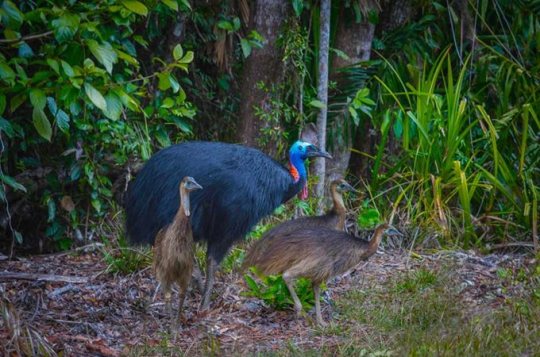


Carve Out Some Time for the Cassowary
Famous for their bright colors and short tempers, cassowaries are a group of flightless birds in the genus Casuarius. There are three species: the Northern Cassowary (C. unappendiculatus) which is found in New Guinea; the Southern Cassowary (C. casuarius), native southern New Guinea and northern Australia; and the Dwarf Cassowary (C. bennetti), endemic to New Guinea and the surrounding islands. All three species prefer tropical forests, though they are known to venture into savannahs, wetlands, and suburban areas in search of food.
Cassowaries are mainly active at dawn and dusk, and spend the time in between in their nests-- large pads of vegetation built on the ground. They opportunistic omnivores; their primary source of food is fruit and fungi, but they will also eat insects, frogs, fish, birds, small mammals, and carrion when available. Much of the fruit they eat is swallowed whole, which makes cassowaries invaluable for spreading seeds throughout their range. Additionally, due to their large size, adult cassowaries have no natural predators, and will aggressively defend their young from predators like snakes, monitor lizards, birds of prey, and wild dogs. When startled this birds can run up to 50 kph (31 mph), or lash out with their powerful legs.
Members of the Casuarius genus are solitary, save for the reproductive season. This season runs from May to September, when fruit is most abundant. Males maintain and defend territories, and call to attract mates. These calls are extremely loud, and at one of the lowest frequencies of any known bird, at about 23 Hertz. When a female approaches, the male crouches and allows the female to inspect him. She may also chase him, typically into water where the two perform a ritualistic fight before she submits. After laying her eggs, the female will move on to another male’s territory.
The eggs are extremely large and bright green, and usually laid in clutches of four. The male alone tends these eggs, incubating them and maintaining the nest for 50-52 days. The chicks that emerge stay with him for an additional 8-9 months until they become independent. Individuals take up to three years to become fully mature, and the average lifespan of wild Casuarius is anywhere from 30 to 50 years.
Southern Cassowaries are the largest of the three species, at up to 1.8 m (5ft 11 in) tall and weighing 58 kg (130 lbs) on average. Females tend to be much larger than males, and the species is considered to be the largest in Asia and the 3rd largest in the world. The Dwarf Cassowary, as the name implies, is significantly smaller at only 1.5m (4ft 11in) tall and 26 kg (57 lbs) at maximum. Northern Cassowaries lie between the two extremes. While all three species have black bodies, the coloration of their heads and necks vary significantly. Both the Northern and Southern Cassowary species have wattles-- pouches of skin that dangle from the neck-- that can be red, gold, purple, or white, which contrasts sharply with their blue necks. The Dwarf Cassowary lacks a wattle, and has a darker blue neck. In addition, it has the smallest head crest, or casque,; the Southern Cassowary’s casque is blade-shaped, and larger than the Dwarf Cassowary’s. The Northern Cassowary’s casque is more flared, and the largest of the three species.
Conservation Status: The Dwarf and Northern Cassowary species are considered Near Threatened and Least Concern respectively by the IUCN, while the Southern Cassowary is classified as endangered. All three are threatened primarily by habitat loss.
If you like what I do, consider leaving a tip or buying me a ko-fi!
Photos
Steve Parish
Kevin Schafer
San Diego Zoo
#northern cassowary#southern cassowary#dwarf cassowary#cassowary#Casuariiformes#Casuariidae#paleognaths#birds#tropical forests#tropical forest birds#tropical rainforests#tropical rainforest birds#savannahs#savannah birds#wetlands#wetland birds#asia#southeast asia#Papua New Guinea#australia#oceania
179 notes
·
View notes
Text
Happy World Cassowary Day (according to Google) !


11 notes
·
View notes
Text
holy shit yall
it's world cassowary day
10 notes
·
View notes
Text
Fossil Novembirb 5: It's Getting Hot In Here

Sandcoleus by @drawingwithdinosaurs
Global warming is nothing new for the planet, and even in the Cenozoic we've had our share of rapid warming events - the most notable one being the Paleocene-Eocene Thermal Maximum (PETM). This event, taking place 56 million years ago, was the result of rapid carbon release from the North Atlantic Igneous Province - aka, a volcano exploded, released a bunch of greenhouse gases, and suddenly global temperatures jumped somewhere between 4 and 10 degrees Celsius (depending on location) in a very short period of time - sound familiar?
Given the obvious parallels to the current day, this event has been studied extensively, though only in a few spheres. We know that plants changed dramatically, with broad leafed plants spreading around the world and turning it into a global tropical forest, even at the polls - leading to interesting adaptations towards the strange light cycles at high latitudes. The world was wetter, and greener, and the change lead to the evolution of new herbivory methods in insects. Mammals got smaller, spread everywhere, and diversified. A mass extinction occurred in the oceans, with microorganisms seeing a larger drop in diversity than during the end-Cretaceous extinction. More calcified algae flourished in the more acidic waters.
But what happened to birds?

Anachronornis by @otussketching
Turns out, we're not quite sure. Bird fossils before the event are rare, and after are so diverged and varied that it's difficult to know what happened because of the event, and what happened before and just didn't fossilize. Luckily, scientists (... me) are on the case! And there were a few ecosystems that straddle the time around the event, such as the one for this post: the Willwood Formation.
This ecosystem in Wyoming takes place over the late Paleocene through the early Eocene, covering the entire PETM period. And while it showcases many different aspects of this transition, we're of course here for the birds! Not only was there Gastornis, because it was a ubiquitous presence in the Northern Hemisphere following the PETM, there were also many other weird early kinds of birds, all across the avian family tree.

Paracathartes by @drawingwithdinosaurs
Sandcoleus is one of the more notable tree birds from this ecosystem, being a relative of living mousebirds but in North America (rather than Africa, where they are found today). In fact, lots of different tree birds were present, indicating that the current dominance of Passeriformes - so called "perching birds" - was not always the case. In fact, Paracathartes was also present - our first Palaeognath, an early Lithornithid! - and it also may have been able to perch in the trees, and certainly seems to have been a decent flier.
There were also Geranoidids like Palaeophasianus and Paragrus, which were once thought of as pheasant-like and crane-like respectively, but may now actually be Palaeognaths - and some of the earliest known flightless ones to boot! That said, said, other than being long legged flightless birds, we know little about their ecologies - they may have been herbivorous, and as tropical forest dwellers, could have had similar lifestyles to the living cassowary.
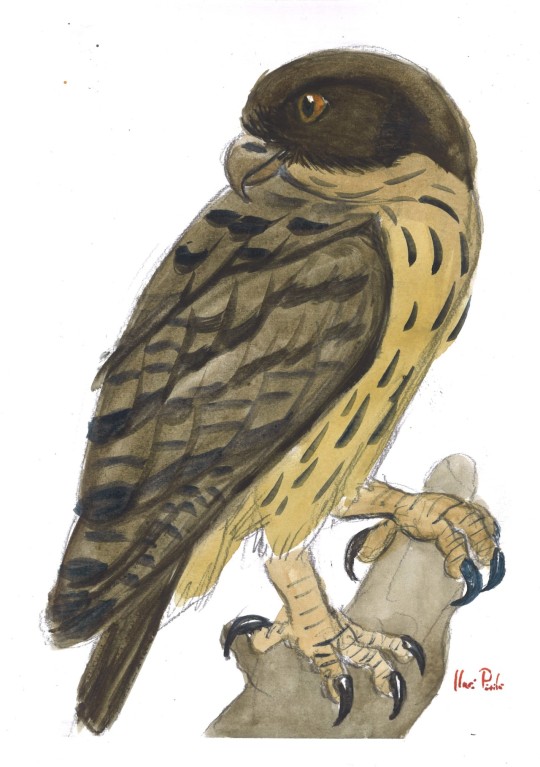
Primoptynx by @otussketching
And, of course, there was also Anachronornis, the half-screamer-half-duck thing, showcasing how waterfowl were experimenting with a variety of different niches during this ecological explosion. And the large variety of new small mammals didn't go unnoticed either - while other early owls are known from Europe, Primoptynx was both the oldest and the biggest, probably thanks to all the new small mammals to eat! There were also possible ground raptors, similar to Bathornis, though they have not been named.
While there are many questions left to answer, it is clear that the PETM had a major effect like it did on everything else on the planet during that time - and the tropical ecologies that they evolved in during the early Eocene would have many implications, especially for where different clades live today!
Sources:
Houde, P., M. Dickson, D. Camarena. 2023. Basal Anseriformes from the Early Paleogene of North America and Europe. Diversity 15 (2): 233.
Mayr, 2022. Paleogene Fossil Birds, 2nd Edition. Springer Cham.
Mayr, 2017. Avian Evolution: The Fossil Record of Birds and its Paleobiological Significance (TOPA Topics in Paleobiology). Wiley Blackwell.
120 notes
·
View notes
Text
For #WorldCassowaryDay:
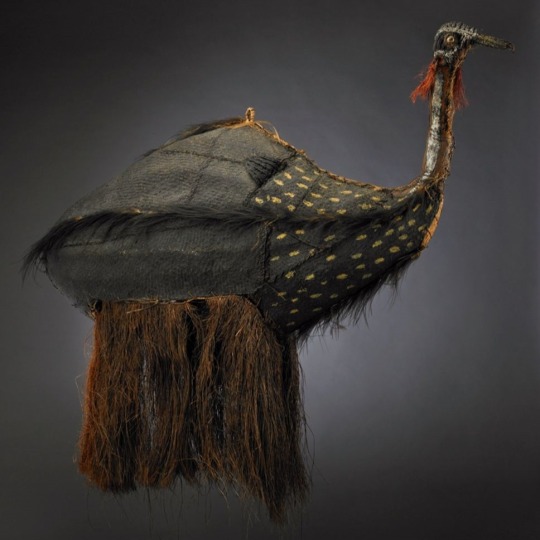

Cassowary Dance Costume, 20th c. Iatmul people, Sepik River, Papua New Guinea Rattan, raffia, shells, string, cassowary feathers, pigment 26.5 x 18.25 x 75.5 in (67.3 x 46.4 x 191.8 cm) Harn Museum of Art S85-SPNG-G233
#animals in art#animal holiday#20th century art#birds in art#bird#cassowary#World Cassowary Day#Papuan art#Papua New Guinea#costume#Iatmul#Indigenous art#Oceanic art#Australasian art
123 notes
·
View notes
Note
World Cassowary Day!
yessss!!! best dinosaurs!


#im-staying-calm-this-time#cassowaries#asks#also this is the first normal ask i've had in months so thank you lol
7 notes
·
View notes
Note
ur an awesome person and you are very loved. life is hard but it's worth it. you have so much to contribute to the world. i hope you have a day filled with love and light and jerma or whatever
idk what suddenly prompted you to send this but im glad you did cause it made my day :D love and light to you too anon! as a gift from me to you, here's this:
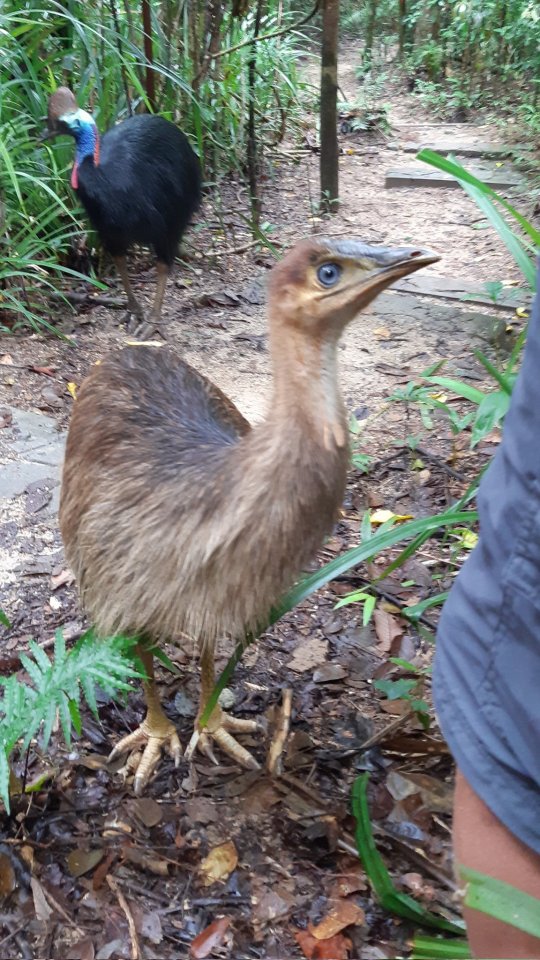
cassowary juvenile :D
34 notes
·
View notes
Text
“where are you!!!!” and the whole time I’m in the middle of nowhere in some small town overrun by bible verses and famous for their apple pies atoning for my sins while the old people tell me the differences between emus and cassowaries. very cool
thank u all for the lovely messages while I navigate virtual world again. I miss all of u so dearly :( life updates although nobody asked:
in late May I was sexually assaulted by a complete stranger- it took a painful amount of time to even comprehend what was happening, and I only happened to be in a moment of vulnerability because I stopped to take a picture of the moon (very on brand for me, I know.)
…. consequently, my anxiety has been crippling and I’m just having a tough time being present
this is coming out of a first assault I experienced back in January (heyyyy universe are you like…. mad at me…) so it’s really just a stacked series of unfortunate events and although I TRY not to take things so personally, my ocd does not allow me to separate cause from effect and action from consequence. I’m gonna fucking die
writing about male anatomy has been nothing short of repulsive for me right now. I’m working on it ! I’m just dealing with all things sexual through a very warped lens for the time being. it’s nothing some time (and a lot of tetris) won’t heal. I’m sure of it
anyways. give me some time to think and play some more tetris and I’ll be back as like 70% of the woman I typically am with some real content again. I’m highly considering doing my first kinktober when I’m done with this book. which is. kinky, to say the least
it’s summer here and the days are much warmer and though I feel virtually alone as I heal from all of this, I feel so much more fulfilled when I’m chatting with all of you. i’m re-learning a lot about christianity from the folks here which tickles the fancy of my religiously guilt-ridden little brain. the sunsets are largely unobstructed, which make for some pretty cool photos. and I know now that the cassowary is considered the most dangerous bird in the world. they’re not far off from humans, I think
- ⭐️


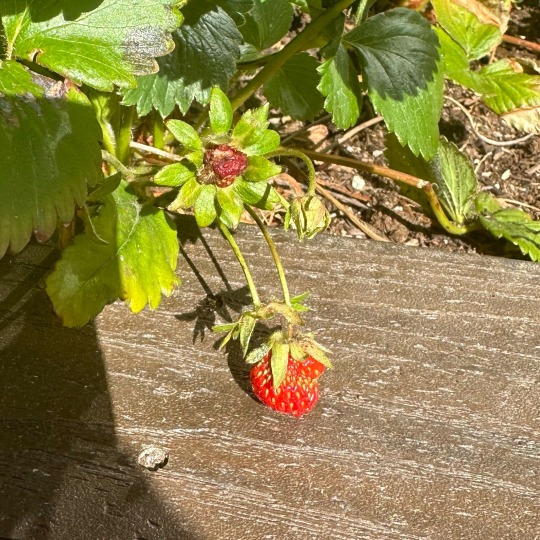


15 notes
·
View notes